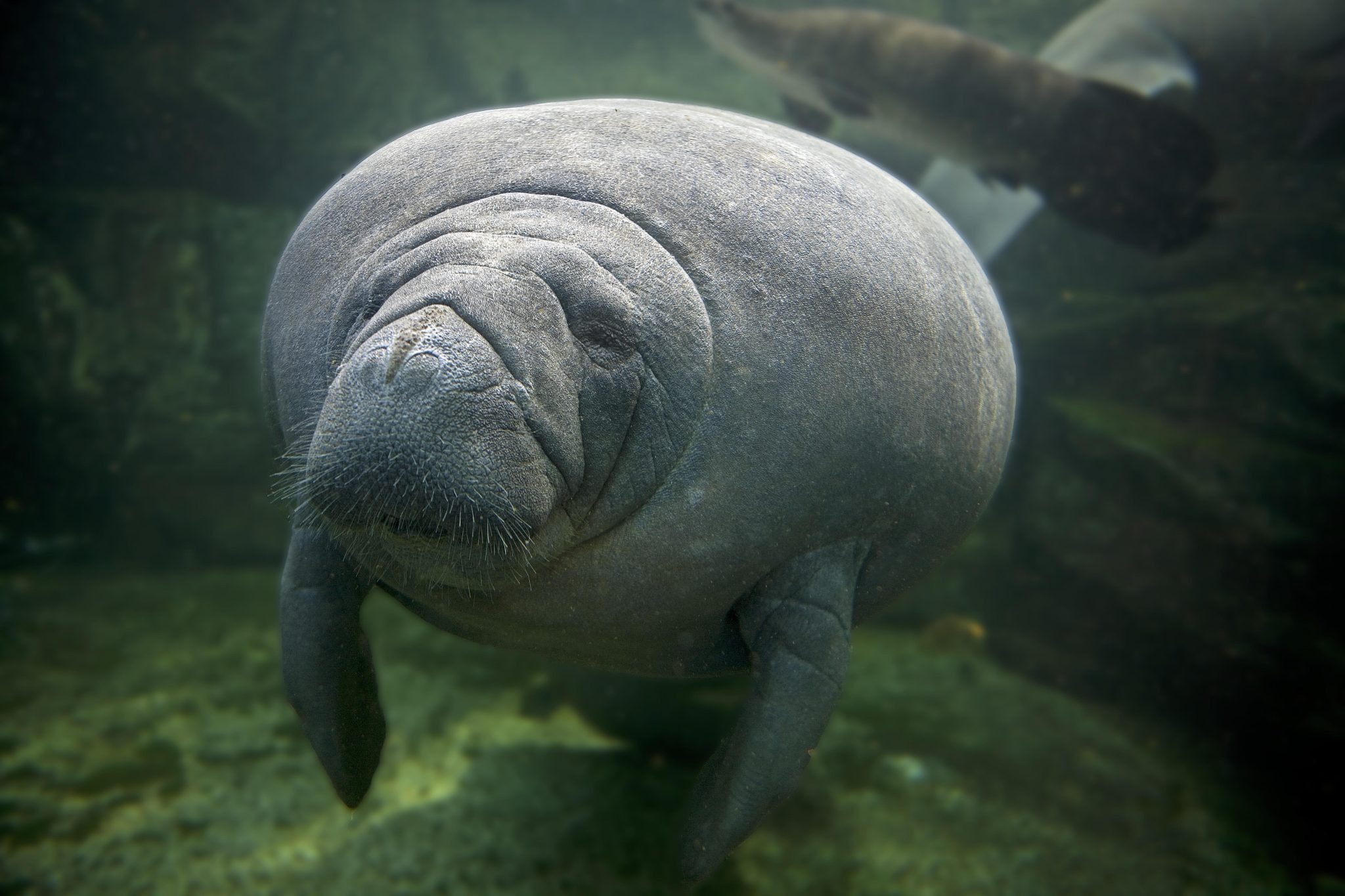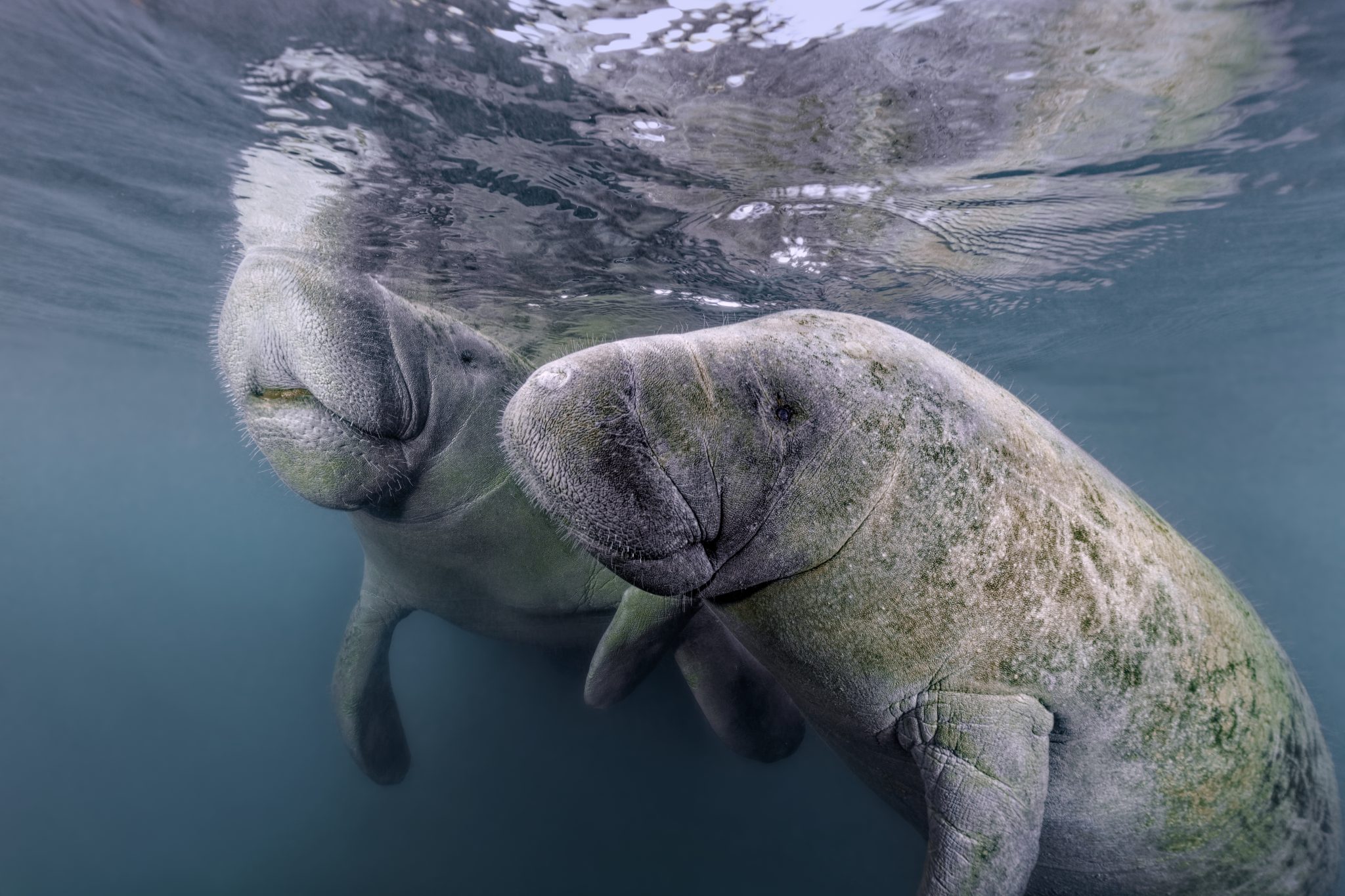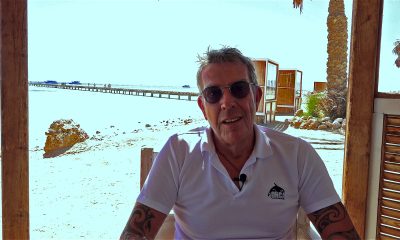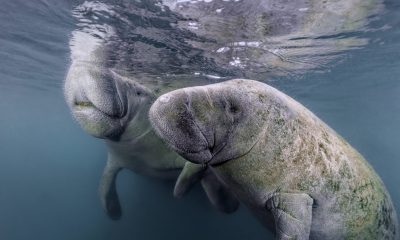Blogs
Seagrass Awareness Month brings critical food source for Manatees to centre stage

March is Seagrass Awareness Month, and there has never been a more critical time to act to protect seagrass communities across Florida and call to action for everyone to contribute to the health of these vital ecosystems. The state’s manatee population has now suffered four years of elevated mortality rates, largely due to seagrass loss. While the reduced mortality rate in 2023 may signal some progress, it still underscores the ongoing need for awareness and conservation efforts.
Recent years have seen a critical decline in seagrass, leading to devastating consequences for manatees. In 2021, a record number of manatees died, with many dying of starvation within the Indian River Lagoon (IRL). Nutrient pollution, resulting in widespread algae blooms, caused a catastrophic loss of seagrass, leaving manatees to starve. This alarming situation prompted the declaration of an Atlantic Florida Manatee Unusual Mortality Event in 2021, which is still ongoing and under close monitoring.
In 2023, there were over 550 recorded manatee deaths in Florida, on top of the record number recorded in 2021 of 1,101, followed by 800 recorded manatee deaths in 2022. While the number of manatees starving from a lack of seagrass was lower last winter, the situation remains dire because human-caused nutrient pollution remains much too high. Due to high water levels in Lake Okeechobee, we are already seeing discharges to both coasts, dangerously affecting water quality and possibly the seagrass communities.
Manatees rely on seagrass as a vital food source. There are seven species of seagrass in Florida, all of which are consumed by manatees. However, the IRL, a critical manatee habitat, has lost over 95% of its seagrass biomass due to human-induced harmful algal blooms. On the West Coast, Tampa Bay has lost 12% of its seagrass in 2 years, with some areas at historic lows, and Sarasota Bay has lost approximately 30% of its seagrass since 2016. While habitat restoration projects are underway and there have been some signs that seagrass communities may be rebounding in some areas of the IRL, ultimate success depends upon avoiding future harmful algal blooms by continuing to improve overall water quality.
Patrick Rose, Aquatic Biologist and Executive Director of the Save the Manatee Club, emphasized the importance of Seagrass Awareness Month, stating, “Manatees and seagrass communities have co-evolved over millions of years. Seagrass Awareness Month is an important opportunity to spotlight this critical aquatic resource. Uncontrolled development, lax regulation, and pollution from Florida’s growing human population have fueled the cycle of algae blooms that cause seagrass loss.”
For it’s part, Save the Manatee Club has long worked with partners to rehabilitate and protect Florida’s waterways. Recently, it partnered with the Center for Biological Diversity and Defenders of Wildlife to file a suit against the U.S. Fish and Wildlife Service (FWS) for failing to revise outdated critical habitat for Florida manatees, which has not been updated since its original designation in 1976. As a result, it was announced in June 2022 that FWS has committed to revising critical habitat for the Florida manatee by 2024. In May 2022, the same three groups, together with Earth Justice, sued the Environmental Protection Agency for failing to protect manatees from water pollution in Florida. The case is still pending.
Members of the public are encouraged to take action to protect seagrass and manatees by:
- Taking the pledge to be Fertilizer-Free™ For Manatees, thus helping to reduce pollution from yard chemicals, which will help prevent harmful algal blooms from forming.
- Preventing damage to seagrasses by avoiding boating over seagrass beds or trimming up the boat’s motor and idling to a safe depth before getting on plane.
- Reporting distressed, sick, injured, or dead manatees to the Florida Fish and Wildlife Conservation Commission at 1-888-404-FWCC (3922).
- Resisting the urge to feed or give water to manatees, which is illegal and can negatively impact their natural behavior.
- Sign up for our Action Alerts and contact local, state, and federal elected officials to urge them to help manatees and restore the seagrasses throughout Florida.
Seagrass Awareness Month serves as a reminder of the urgent need to protect seagrass communities and the manatees that depend on them. By working together, we can ensure a brighter future for these iconic marine mammals and their vital habitats. Rose concluded, “Everyone must act now—from the individual members of the public to governmental and nonprofit organizations to our elected officials—to disrupt this cycle of pollution and proceed to protect and rebuild the seagrass communities that are essential to the survival of manatees and a host of other species, including fishes, dolphins, sea turtles, and birds that collectively depend on this critical aquatic resource.”
Save the Manatee Club, established in 1981 by the late renowned singer-songwriter, author, and entrepreneur Jimmy Buffett, along with former Florida Governor and U.S. Senator Bob Graham, is dedicated to safeguarding manatees and preserving their aquatic habitat. For more information about manatees and the Club’s efforts, visit savethemanatee.org or call 1-800-432-JOIN (5646).
Blogs
Heading out on the water this Summer? Watch for manatees

As National Safe Boating Week approaches, Save the Manatee® Club is urging boaters, and anyone that enjoys Florida’s waterways, to respect and protect the defenseless manatees that inhabit our shared waterways. From May 18 to 24, leading up to Memorial Day Weekend, the campaign aims to raise awareness about recreational boating safety and the importance of safeguarding imperiled manatees during the summer boating season. This week also emphasizes the importance of encouraging boaters to enroll in a boating safety course.
Manatees are semi-migratory marine mammals that are commonly found in shallow estuaries, bays, rivers, canals, and coastal areas throughout Florida and neighboring states. With some manatees venturing as far west as Texas and as far north as Massachusetts, collisions between these gentle giants and watercraft have become distressingly frequent. Boat propellers and high-speed collisions pose significant threats to manatees, often resulting in severe injuries or even death.
Save the Manatee Club is calling on all water enthusiasts to follow essential manatee safety tips to ensure the well-being of the imperiled manatee:
- Obey Speed Zone Signs: Familiarize yourself with and adhere to posted speed limits to prevent collisions with manatees.
- Reduce Glare with Polarized Sunglasses: Wear polarized sunglasses to enhance visibility and spot manatees below the water’s surface.
- Recognize Manatee Signs: Learn to identify signs of manatees in the area, such as swirls or flat spots on the water caused by their movements.
- Respect Manatee Sanctuaries: Keep a safe distance from posted manatee sanctuaries and avoid pursuing or harassing these marine mammals, as it is illegal and can disrupt their natural behaviors.
- Report Distressed Manatees: In Florida, promptly report distressed, injured, tagged, or orphaned manatees to the Florida Fish and Wildlife Conservation Commission (FWC) at 1-888-404-FWCC (3922). Outside of Florida, report sightings to the appropriate state agency or rescue organization. A list of agencies to contact is available at savethemanatee.org/report.
- Protect Seagrass Beds: Avoid boating over seagrass beds and shallow areas where manatees may be feeding. Stick to deep water channels while remaining vigilant, as manatees also utilize these channels during their travels.
- Dispose of Fishing Line Responsibly: Anglers should properly dispose of or recycle used fishing line to prevent entanglement hazards for manatees.
“Each year, National Safe Boating Week provides an excellent reminder for all of us to be aware that we share our waterways with vulnerable manatees,” emphasized Patrick Rose, Aquatic Biologist and Executive Director of Save the Manatee Club. “With the recent Unusual Mortality Event on Florida’s East Coast claiming an alarming number of manatees’ lives, it is more crucial than ever to prevent preventable deaths caused by watercraft collisions. By following manatee-safe boating guidelines, such as obeying speed zones and remaining vigilant for manatees, everyone on the water can contribute to the protection of these gentle giants.”
Save the Manatee Club offers a range of free materials to help safeguard manatees and raise awareness about manatee-safe boating practices. Shoreline property owners and park or marina managers can order aluminum dock signs to alert others about the presence of manatees in their areas. Boaters and paddlers can request packets containing a safety tips card, a waterproof boat banner, and a decal to display on their vessels, providing the number to report manatees in distress. To view and request these materials, visit savethemanatee.org/resources. Save the Manatee Club will also be hosting a live webinar for National Safe Boating Week on Tuesday, May 21st at 6pm EST. To register, visit savethemanatee.org/register.
Marine Life & Conservation Blogs
Book Review: Shells of the World

Shells of the World: A Natural History by M.G. Harasewych
Shells of the world is a guide to the world of marine, shelled molluscs. And what a varied and interesting world it is. Some of my favourite things to find on a dive are detailed in this book, including disco clams (or Electric File Clams as they are correctly names), the cephalopods, giant clams and sea hares. There are also many on my wish list, top of which is the Nautilus.
Each chapter provides a detailed description of the species, along with beautiful images. You can dive deeper and discover where they live, both with global distribution and the habitat they prefer. Learn about their diet, reproduction and diversity.
Having dipped in and out of this lovely book over the past few weeks, it has inspired me to learn more about this group of animals that we see on most divers, wherever we are in the world. Some of the shells are incredibly intricate and beautiful. I have always agreed with never collecting, or touching, marine life. The description of a certain set of cone shells should be a warning to those that are happy to pick up marine life! One of the cone shells has a local name called the cigarette snail. Why? Because once the venom is in your system from this animal, you only have time to smoke one cigarette before the affects of the venom are fatal!
What the publisher says:
Mollusks are invertebrate animals with a remarkable natural history and a rich fossil record, and their shells are prized for their breathtaking variety and exquisite beauty. Shells of the World provides a wide-ranging look at the incredible diversity of marine mollusks. An informative introduction outlines the lineages covered, followed by a directory section, split into classes, that profiles a broad selection of different taxa to give a sense of their sheer numbers and variety.
- Features hundreds of beautiful color photos, depicting both the live animals and their shells
- Discusses mollusk evolution, anatomy, life cycles, behavior, and ecology
- Describes unique characteristics, distribution, habitat, and size
- Provides valuable insights into the conservation of the world’s marine mollusks
- Ideal for malacologists and shell collectors everywhere
About the Author:
M. G. Harasewych is research zoologist emeritus and former curator in the Department of Invertebrate Zoology at the Smithsonian Institution’s National Museum of Natural History. A fellow of the American Association for the Advancement of Science, he is the author (with Fabio Moretzsohn) of The Book of Shells: A Life-Size Guide to Identifying and Classifying Six Hundred Seashells.
Book Details
Publisher: Princeton University Press
Hardcover
Price: £25
ISBN: 9780691248271
Published: 9th April, 2024
-

 Marine Life & Conservation Blogs3 months ago
Marine Life & Conservation Blogs3 months agoCreature Feature: Swell Sharks
-

 Gear Reviews4 weeks ago
Gear Reviews4 weeks agoGEAR REVIEW – Revolutionising Diving Comfort: The Sharkskin T2 Chillproof Suit
-

 Blogs2 months ago
Blogs2 months agoMurex Resorts: Passport to Paradise!
-

 Blogs3 months ago
Blogs3 months agoDiver Discovering Whale Skeletons Beneath Ice Judged World’s Best Underwater Photograph
-

 News3 months ago
News3 months agoPADI Teams Up with Wellness Brand Neuro to Drive Ocean Change and Create a Blue State of Mind
-

 Gear Reviews3 months ago
Gear Reviews3 months agoGear Review: Oceanic+ Dive Housing for iPhone
-

 Marine Life & Conservation2 months ago
Marine Life & Conservation2 months agoSave the Manatee Club launches brand new webcams at Silver Springs State Park, Florida
-

 Blogs1 month ago
Blogs1 month agoSOMABAY: Scubaverse interviews Wolfgang Clausen, General Manager, ORCA Dive Clubs


















